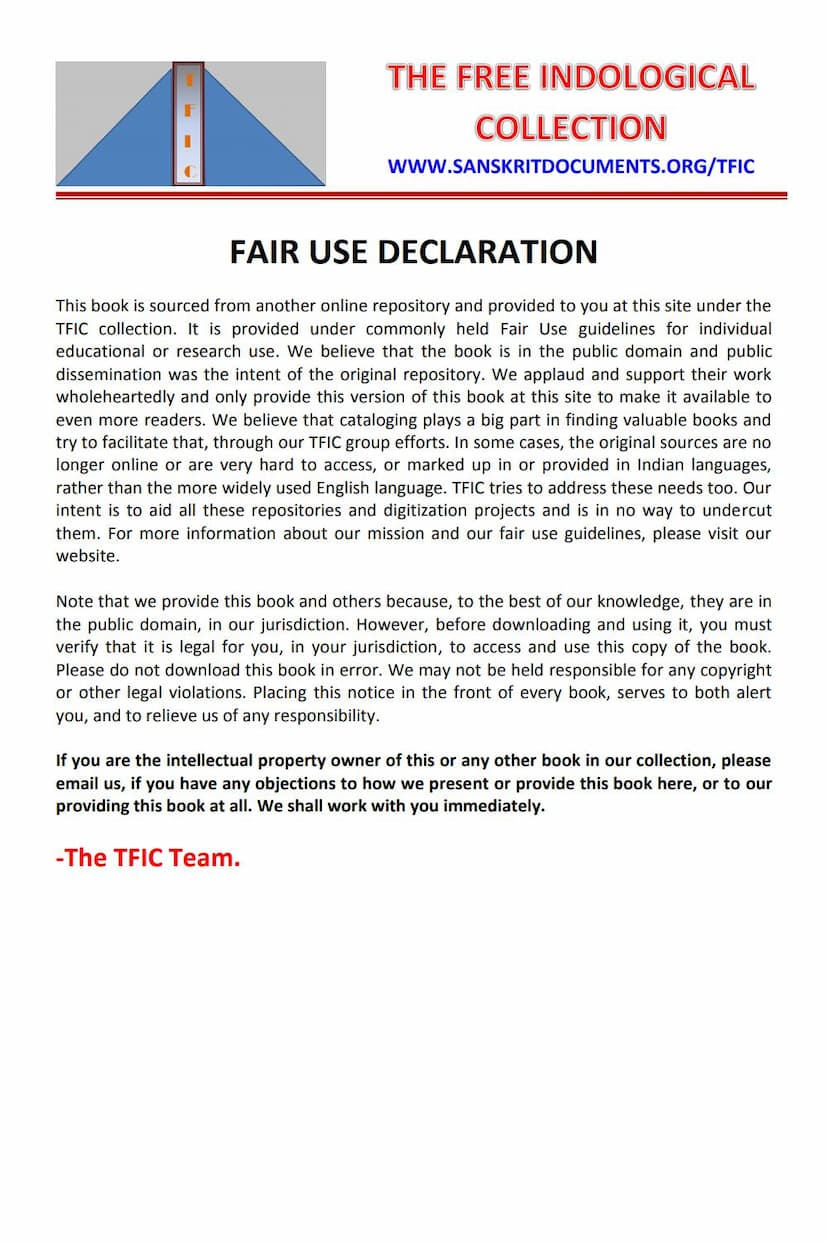Jain Bibliography
Added to library: September 1, 2025

Summary
This document is a comprehensive bibliography of Jainism, compiled by Chhote Lal Jain and published by Bharati Jain Parisad in Calcutta in 1945. It is presented as the first number in the "Jaina Bibliography Series." The foreword, written by Dr. Kalidas Nag, highlights the vast, yet largely unexplored, field of Jain literature, art, and archaeology, and laments the lack of appreciation for Jain contributions to Indological studies. Nag commends the author's effort to supplement the earlier work of Dr. A. Guerinot and cover research up to 1925, with plans for further updates. He also emphasizes the relevance of Jainism's principle of non-violence (ahimsa) in the context of a world threatened by violence.
The book itself is structured into several sections:
-
Bibliographies, Catalogues, and Guide Books: This section lists various bibliographical works, catalogues of manuscripts, and guidebooks that contain references to Jainism. It includes entries like Simon Chitty's "Catalogue of Books in the Tamil Language," John Murdoch's "Classified Catalogue of Tamil Printed Books," Gustav Oppert's index of manuscripts, and Cecil Bendall's catalogue of Sanskrit, Pāli, and Prākrit books in the British Museum. Dr. A. Guerinot's significant contributions, "Essai de Bibliographie Jaina" (1906) and "Répertoire d'Épigraphie Jaina" (1908), are also prominently featured.
-
Books of General Reference (Dictionaries, Encyclopædias, Gazetteers and Census Reports): This extensive section provides a wealth of information from various government census reports and gazetteers across India. It details the presence, distribution, historical background, religious tenets, sectarian divisions, and architectural remnants of Jain communities in different regions like Madras Presidency, Bengal, Rajputana, Mysore, Bombay, Assam, Bihar, Orissa, and Central Provinces. Numerous entries discuss Jain temples, sculptures, inscriptions, and their historical context.
-
Archaeology, Arts, and Museum Reports: This section delves into the material culture of Jainism, listing reports and articles on cave temples (like Elephanta and Ellora), Jain bastis, sculptures, inscriptions found in various archaeological sites, and museum collections. It highlights the distinctive architectural styles and iconographic features of Jain art, often found alongside Buddhist and Hindu remains. Significant locations mentioned include Mathura, Udayagiri and Khandagiri, Sravana Belgola, Mount Abu, and various sites in South India.
-
Epigraphy and Numismatics: This part focuses on inscriptions and numismatic findings related to Jainism. It lists numerous epigraphical records from different regions and periods, often detailing grants to Jain temples, the succession of Jain acharyas and sanghas, and the patronage of Jainism by various royal dynasties. It also touches upon coins with Jain symbols.
-
History and Geography (Including Chronology and Travels and Biography): This section covers the historical trajectory of Jainism, its geographical spread, chronological frameworks, and biographical accounts of significant figures. It touches upon the early history of Jainism, its relation to Buddhism and Brahmanism, the persecution of Jains, royal patronage, and their presence in various regions of India. It also includes references to important Jain pilgrimage sites like Mount Abu, Satrunjaya, and Parasnath hill.
-
Sociology, Religion (including Logic and Philosophy), Ethnology and Iconography: This broad section encompasses various aspects of Jainism, including its social structure, religious practices, philosophical underpinnings, the life of ascetics and lay followers, ethical doctrines (like ahimsa), sectarian differences (Svetambara, Digambara, Sthānaka vāsi), mythology, rituals, and iconography. It also discusses their customs, such as the practice of Sallekhana (voluntary fasting unto death) and their reverence for animal life.
-
Language and Literature and Educational Statistics: This final section deals with Jain linguistic contributions, particularly in Prakrit and Tamil, and their literary output. It lists important Jain works, grammars, dictionaries, and chronicles. It also provides educational statistics on the Jain population, indicating their literacy levels in various provinces.
The preface by Chhote Lal Jain elaborates on the purpose of the bibliography, noting the vastness of Jain contributions and the need for proper cataloging of its literature. He mentions his intention to supplement Guerinot's work and bring the bibliography up-to-date in a subsequent volume. He also expresses gratitude to the libraries and individuals who assisted in the compilation.
Overall, this "Jaina Bibliography" is a monumental compilation, serving as a crucial reference tool for scholars and researchers interested in the multifaceted history, culture, religion, art, and literature of Jainism. Its detailed entries offer a glimpse into the extensive scholarship produced on the subject up to 1925, highlighting the pervasive and enduring influence of Jainism in Indian civilization.